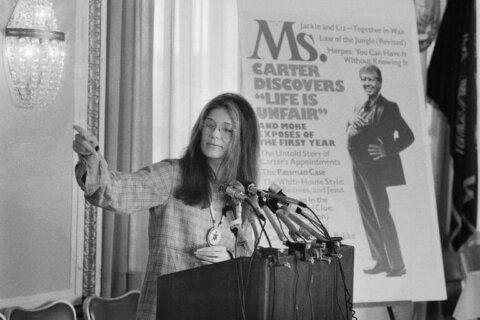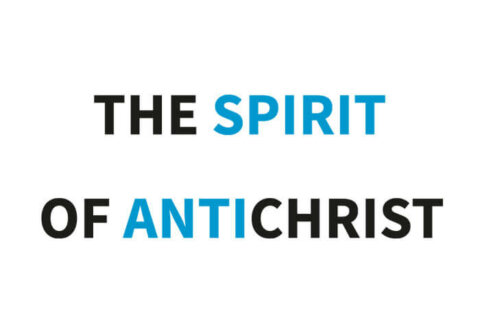No hearse, no body, and no entourage to a cemetery. The remains have been cremated. The ashes have been mixed with cement and made into an artificial reef, which is then placed in the sea. One such “cemetery” is Neptune off the coast of Florida. Corals and other sea life are forming on the items containing the ashes of about 200 people, 40 feet under the sea. This is advertised as an eco-friendly method of disposition.
With the rapid increase in cremations versus traditional burial today, such innovations have arisen. There are companies today offering various options for cremated remains–turning part of the cremated remains into synthetic diamonds that can then be made into jewelry, mixing into paint and making a painting; putting a portion of the remains in a locket known as cremation jewelry; sending them in a scientific satellite into outer space; even making fireworks out of them!
Is this not demeaning to the sanctity and value of the human creation? “For whether we live, we live unto the Lord…whether we live therefore, or die, we are the Lord’s.” Rom. 14:8. Our body and soul belong to God, our Creator. “What? know ye not that your body is the temple of the Holy Ghost which is in you, which ye have of God, and ye are not your own? For ye are bought with a price: therefore glorify God in your body, and in your spirit, which are God’s.” 1 Cor. 6:19-20.
Every life has a sunrise and a sunset in this world, “for it is appointed unto men once to die.” “All are of the dust, and all turn to dust again” (Eccl. 3:20). Yes, we die. The spirit then returns to God who gave it (Eccl. 12:6-7), but the body remains. Have you seriously considered what the will of God is concerning the interment of the body? Since the body belongs to God, how can one glorify Him in his body at death?
The Interpreter’s Dictionary of the Bible states, “The proper interment of the dead was a matter of great importance to the peoples of the ancient Near East. It is attested by frequent references to burial in the Bible and other ancient writings and by the presence of thousands of tombs which modern archaeologists have excavated in Bible lands” (article Burial, vol. 1, p. 474).
Great respect and care was given to the bodies of the deceased. The corpse was first washed (Acts 9:37), then anointed (Mark 16: 1), wrapped in linen garments with spices enclosed (John 19:40), and finally the limbs were bound and the face covered with a napkin (John 11:44).
The first commercial transaction recorded is that of Abraham’s purchase of a burial place: “I will give thee money for the field; take it of me, and I will bury my dead there.” Gen. 23:13. Here we see Abraham making provision for the interment of his loved ones. It is said that the first burial recorded in the Bible is Sarah’s (Gen. 23:19-20). This same field later received the remains of Abraham (Gen. 25:9-10), Isaac, Rebekah, Leah (49:30-32), and Jacob (50:13). David and Solomon were buried in the city of David (I Kings 2:10; 11:43).
None of these individuals were cremated. John the Baptist was not cremated. Lazarus was not cremated, and Jesus certainly was not cremated.
The following Old Testament references show that disposal of a body by cremation was prescribed only as a sentence of particular punishment and warning:
Joshua 7:15 records one of the rare cases of cremation, and it was as a sentence of contempt indicating severe punishment: “And it shall be, that he that is taken with the accursed thing shall be burnt with fire, he and all that he hath: because he hath transgressed the covenant of the Lord, and because he hath wrought folly in Israel.” This does not mean that they were burned alive. Verse 25 makes it very clear that Achan was first stoned to death, and then his body was burned.
“And the daughter of any priest, if she profane herself by playing the whore, she profaneth her father: she shall be burnt with fire.”
Lev. 21:9
“If a man take a wife and her mother, it is wickedness: they shall be burnt with fire, both he and they; that there be no wickedness among you.”
Lev. 20:14
As in the case of Achan, this no doubt does not refer to any being burned alive, but to the bodies being disposed of by cremation, as a manifest warning to all Israel. Cremation was clearly an extreme disgrace, showing God’s contempt for sin.
The New Bible Dictionary states that “Cremation was NEVER a Jewish practice.” (p. 172). Human burial developed from the belief that the dead rise again. Like a seed, a body is planted in the earth to await being raised an incorruptible body at the Great Last Day (1 Cor. 15:42).
“In the course of the early persecutions, the bodies of martyrs were sometimes cremated by their persecutors and the ashes scattered in an indication of contempt. The catacombs give evidence of the care the early Christians took to recover the bodies of their martyrs and to grant them honorable burial.”
New Catholic Encyclopedia
The Jewish Mishna (written oral law around A.D. 220) forbids cremation as idolatry (A.Z.I. 3). Obviously this judgment arose from knowledge of the pagan customs of that time.
Paganism and Cremation
The New Catholic Encyclopedia mentions this pagan practice among the Aztecs, Hindus, and Buddhists: “The Aztecs were the first to introduce the burning of corpses in Central America, and from there it spread northward. India, even before Buddhism, became the classic land of cremation…As the burning of the corpse of Buddha by his disciples bears witness, cremation was practiced from the beginning of Buddhism. With the spread of Buddhism as a universal religion, cremation also spread into the lands of the Far East.” (Cremation, pg. 440)
“During the 1st millennium B.C., both cremation and burial were practiced in most Italian and Greek cities and, due to the influence of the Greeks and Etruscans, cremation was adopted by the Romans. It became fashionable among aristocrats throughout the Roman Empire and was the funeral mode of the Caesars.”
“According to Cicero, in Rome, inhumation (burial) was considered the more archaic rite, while the most honoured citizens were most typically cremated–especially upper classes and members of imperial families.”
The Encyclopedia Americana
Hinduism
The Americana relates that cremation was first practiced extensively in India, where the custom may have been introduced along with Hinduism during the second millennium before Christ. There it has always been the prevalent Hindu funeral mode, and whenever possible the ashes are cast ceremonially on the Ganges River.
Hinduism mandates cremation, considering it to be the last of the 16 life rituals. Jainism and Sikhism also strongly prefer cremation. The Hindu belief in reincarnation forms the platform of their practice. Since Agni, their god of fire, is seen as a link between matter and spirit, the seen and unseen, and a messenger between men and gods, dead bodies were disposed by cremation. Thus, the dead body is an offering to Agni with an earnest prayer to purify and lead the individual to a better and brighter life.
“Agni, consume not this body to cinders neither give it pain nor scatter about its skin or limbs. When the body is fairly burnt, convey the spirit to the ancestors. May the five elements be merged with their basic forms.”
A Vedic hymn to Agni, the god of fire
Burning the body is also believed to produce a feeling of detachment in the freshly disembodied spirit to encourage it to pass to its next life–which they believe may be either animal or human–rather than remain near its former body and its loved ones.
Holy men and children are exceptions to this funeral mode as Hindus believe holy ones are supposed to have attained a high degree of detachment from the body already in life, so do not need to be cremated. They are buried in the lotus position. Children are believed to be much less attached to the body.
At the time of the cremation a “Puja” (ritual worship) is performed. The holy text of Rigveda, one of the oldest Hindu scriptures, has many Ruchas (poems) related to cremation, which state that Lord Agni will purify the dead body.
Hinduism obliges the closest male relative (son, grandson, etc.) of the deceased to immerse the cremated remains in the holy river Ganges, preferably at one of the holy cities of India. In southern India, the ashes are immersed in the river Kaveri at a stretch where the river flows from east to west, depicting the life of a human being from sunrise to sunset.
Our missionaries have witnessed such cremations at a Hindu site in Nepal.
Early Christians Frowned Upon Cremation
Christianity frowned upon cremation and attempted to abolish Graeco-Roman pagan rituals. As Christianity spread and the belief in the resurrection took hold, cremation fell from favour. By the 5th century, the practice of cremation had practically disappeared from Europe.
But in our time, we have witnessed a rapid revival of this practice. For those who understand the biblical prophecies, this is not surprising. The dragon has been loosed. Revelation 20:7-9 reveals that shortly before the final return of Jesus Christ to call this world into judgment, the spirit of paganism would be revived. This is evidenced in numerous ways; the pagan practice of cremation is one of them.
Life magazine reported that by 2017, one out of two Americans will choose cremation over burial, and stated that “Historically, the U.S. has been a majority Christian nation, and Christianity favors burial for a number of reasons. But Americans are becoming increasingly secular and many of us now identify as atheist, agnostic or, even if we consider ourselves religious, aren’t affiliated with a particular faith. That separation from a religion with ties to traditional burial has led to more Americans exploring other options of disposition.”
Indeed, people are straying far from God and are more secular and pagan in their practices, including funerary rites.
While many are uninformed as to the pagan roots of cremation and may choose it for economical reasons alone, it certainly should not be the choice of Christians. “Learn not the way of the heathen” (Jer. 10:2), the Bible warns. Also, with biblical examples of cremation being indicative of God’s wrath and contempt for sin, surely it would not be a consideration for His children.
Tertullian declared cremation was a symbol of the fire of hell, and Cyprian regarded it as equivalent to apostasy.
The church buried their dead; the bodies being committed as seeds of immortality to the bosom of the earth till the last day.
All the dead will rise on the great Resurrection Day, and even the scattered ashes of those who were cremated will obey the voice of the Almighty when He calls us all to judgment on this great and terrible day!
The Hope of the Righteous
Schaff’s church history declares that “The early church differed from the pagan and even from the Jewish notions by a cheerful and hopeful view of death, and by discarding lamentations, rending of clothes, and all signs of extravagant grief. The terrors of the grave were dispelled by the light of the resurrection, and the idea of death was transformed into the idea of a peaceful slumber.”
“But I would not have you to be ignorant, brethren, concerning them which are asleep, that ye sorrow not, even as others which have no hope. For if we believe that Jesus died and rose again, even so them also which sleep in Jesus will God bring with him.” 1 Thess. 4:13-14. The apostle Paul also declared that “to die is gain.”
The day of a believer’s death, especially if he were a martyr, was called the day of his heavenly birth. Cyprian (c. 200 – 258, bishop of Carthage) stated, “No one should be made sad by death, since in living is labor and peril, in dying peace and the certainty of resurrection.”
The Redemption of the Body
Christianity provides for the redemption of the body as well as the soul (Rom. 8:23). Hence the Greek and Roman custom of burning the corpse was repugnant to Christian feeling and the sacredness of the body.
“Marvel not at this: for the hour is coming, in the which all that are in the graves shall hear his voice, And shall come forth; they that have done good, unto the resurrection of life; and they that have done evil, unto the resurrection of damnation.”
John 5:28-29
“Behold, I shew you a mystery; We shall not all sleep, but we shall all be changed, In a moment, in the twinkling of an eye, at the last trump: for the trumpet shall sound, and the dead shall be raised incorruptible, and we shall be changed. For this corruptible must put on incorruption, and this mortal must put on immortality. So when this corruptible shall have put on incorruption, and this mortal shall have put on immortality, then shall be brought to pass the saying that is written, Death is swallowed up in victory. O death, where is thy sting? O grave, where is thy victory?”
1 Cor. 15:51-55





Very informative! My beliefs backed up by burial not burning!
Thank you for this comprehensive study. Jer. 10:2 “Learn not the way of the heathen” is a command GOD’S people should consider regarding many customs that have been wrongfully understood as christian customs! Like with Halloween, Easter, and even Christmas!